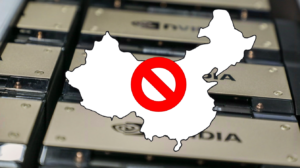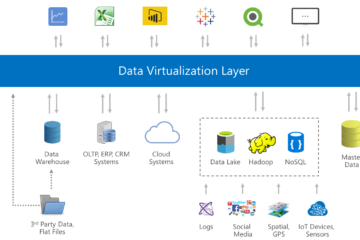Using High-end AI Technology in Prohibited Area

With recent restrictions on high-end Nvidia AI cards and related technologies due to US export controls, deploying AI solutions in Hong Kong faces specific challenges, especially around acquiring the advanced hardware needed to train large AI models. Here are some legal, alternative solutions that could help your technical teams in Hong Kong stay effective while working within regulatory limitations:
- Use Cloud-Based AI Services
Many cloud providers, including Amazon Web Services (AWS), Google Cloud Platform (GCP), and Microsoft Azure, offer GPU and TPU (Tensor Processing Unit) instances. These instances provide access to high-end AI infrastructure without requiring direct hardware imports, helping teams avoid export restrictions on physical GPUs. Each of these platforms offers a variety of specialized AI and ML tools that can accelerate development and reduce the dependency on local hardware.
- AWS: AWS offers EC2 P4d instances powered by Nvidia A100 GPUs, which are suitable for high-performance AI and ML tasks.
- GCP: Google’s Cloud AI offers Nvidia A100 and TPUs, specifically optimized for deep learning and generative AI.
- Azure: Microsoft provides Nvidia-based virtual machines and specialized Azure ML services, which support large-scale model training.
Using cloud infrastructure enables flexibility, as resources can be scaled up or down based on project requirements. Furthermore, cloud providers often provide regional compliance support, ensuring solutions remain within legal boundaries.
NOTE: some of the IT giants are now blocking people from China to use their AI cloud services. There is no guarantee on the access of services.
- Collaborate with Data Science Teams in Allowed Regions
Another approach would be to leverage your global consulting teams in regions where high-end Nvidia cards are available. For example, your teams in the US, UK, and the Netherlands could handle computationally intense model training and heavy data processing tasks. Once trained, these models can be exported and deployed in Hong Kong for inference and usage without requiring high-end GPUs.
This approach allows you to use distributed model development where the intensive training and tuning take place in regions with access to powerful hardware, and model inference and monitoring are done locally. Model exchange across regions should comply with legal requirements, but this separation of tasks can allow Hong Kong teams to leverage state-of-the-art models without needing restricted hardware.
- Utilize Lighter AI Models and Transfer Learning Techniques
Building models that require less computational power can be an effective workaround. Techniques such as transfer learning, where a model trained on extensive datasets (typically by the US or European teams) is fine-tuned with smaller local datasets, can reduce hardware demands. Model distillation is another technique that produces smaller, more efficient models capable of running on lower-power GPUs without significant performance loss.
Open-source models like BERT, GPT, and ResNet can also be fine-tuned and deployed without needing top-tier GPU cards. Frameworks such as Hugging Face provide tools for model optimization that can help reduce hardware requirements, allowing teams in Hong Kong to deploy sophisticated AI models within the constraints of their local infrastructure.
- Opt for Mid-Tier, Locally Available GPUs
While Nvidia’s top-end AI GPUs may be restricted, mid-tier GPUs like the Nvidia RTX series could still provide sufficient computational power for some tasks, especially when using model optimization techniques. These GPUs are not always subject to the same export controls and can handle many tasks with adjusted model sizes and batch processing.
Although performance will not match the highest-end cards, these mid-tier GPUs still support CUDA and can work with major AI frameworks (like TensorFlow and PyTorch). Paired with optimized code, they can enable significant progress in prototyping and running inference in Hong Kong without restricted technology.
- Explore Open-Source Alternatives for Hardware and Software
Some open-source initiatives are working to develop AI-optimized hardware alternatives and ML frameworks compatible with different hardware configurations. For instance, companies such as AMD and Intel offer competitive GPU and AI accelerator options (like AMD’s ROCm ecosystem and Intel’s Habana Labs processors) that may still be available for purchase in Hong Kong.
Additionally, consider leveraging open-source machine learning libraries designed for efficient, lower-resource computing, like:
- ONNX (Open Neural Network Exchange): This format enables model conversion across frameworks and is optimized for performance across different hardware.
- TensorFlow Lite: Ideal for lightweight model deployment, it allows AI models to run on mobile devices or edge hardware.
- OpenVINO: Intel’s toolkit, useful for optimizing inference on Intel hardware, enables accelerated deep learning applications on Intel processors and lower-end GPUs.
- Work with Specialized Local Partners or Providers
Some regional companies offer local AI compute services tailored to areas with restrictions. These companies often provide access to optimized infrastructure that aligns with local compliance standards. For example, Alibaba Cloud and Huawei Cloud both offer AI compute solutions in the Asia-Pacific region that might comply with Hong Kong’s regulatory landscape.
These providers may offer localized versions of AI services comparable to high-end GPU access but through regional data centers and specialized hardware, which can sometimes be legally available and effective.
- Engage in Federated Learning for Collaborative AI
If the AI project involves sensitive or proprietary data, consider federated learning, a framework that enables teams to train models without sharing data between locations. Teams in different regions can work collaboratively on model updates without directly moving data across borders.
With federated learning, model updates (rather than data itself) are shared across regions. This approach not only addresses legal constraints but also enhances data security and privacy. It allows Hong Kong-based teams to leverage global data insights while complying with export and data transfer regulations.
Summary of Recommendations
- Cloud-Based AI Services: Use services like AWS, GCP, or Azure to access high-performance GPUs legally and remotely.
- Collaborative Development: Conduct model training in regions with hardware access, and deploy for inference in Hong Kong.
- Efficient Modeling Techniques: Use transfer learning, model distillation, and optimization to reduce resource demands.
- Mid-Tier GPU Alternatives: Look for GPUs that are unrestricted and adequate for most tasks.
- Open-Source Hardware and Software: Consider alternatives like AMD GPUs or open-source AI frameworks tailored for efficient computation.
- Local Cloud Providers: Partner with regional providers like Alibaba Cloud for tailored, compliance-friendly AI solutions.
- Federated Learning: Implement federated learning to train models collaboratively without sharing sensitive data.
This multi-pronged approach enables your Hong Kong teams to remain productive and effective while respecting regulatory boundaries. Over time, monitoring updates on export control policies and new hardware options will also be essential to adjusting your strategy as restrictions evolve.


0 Comments